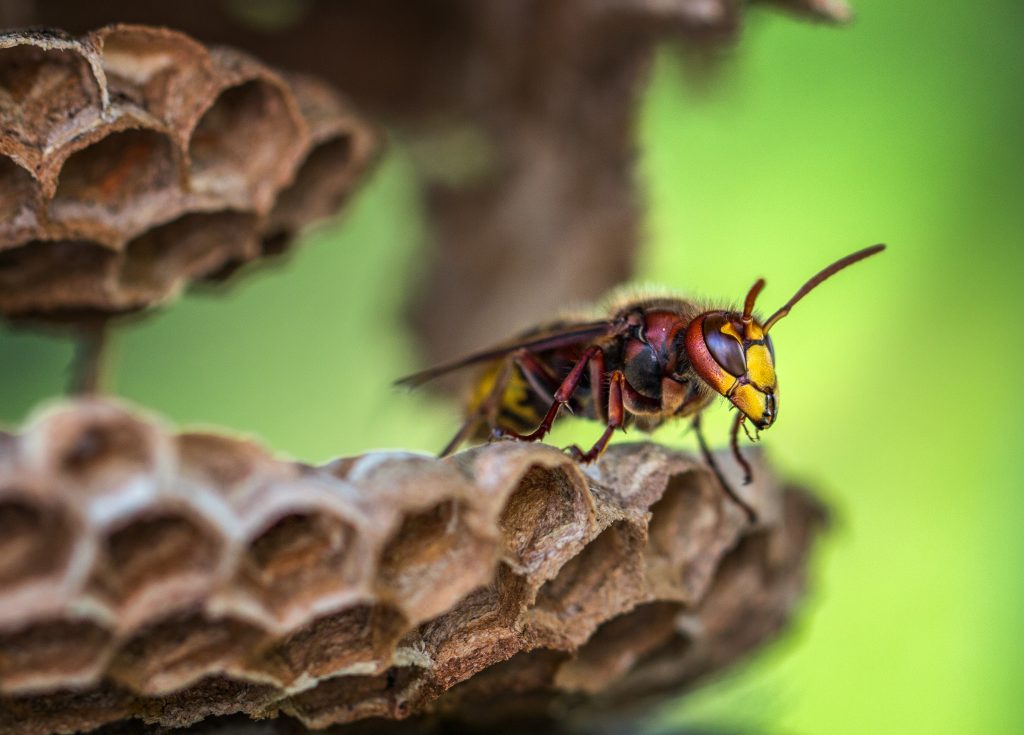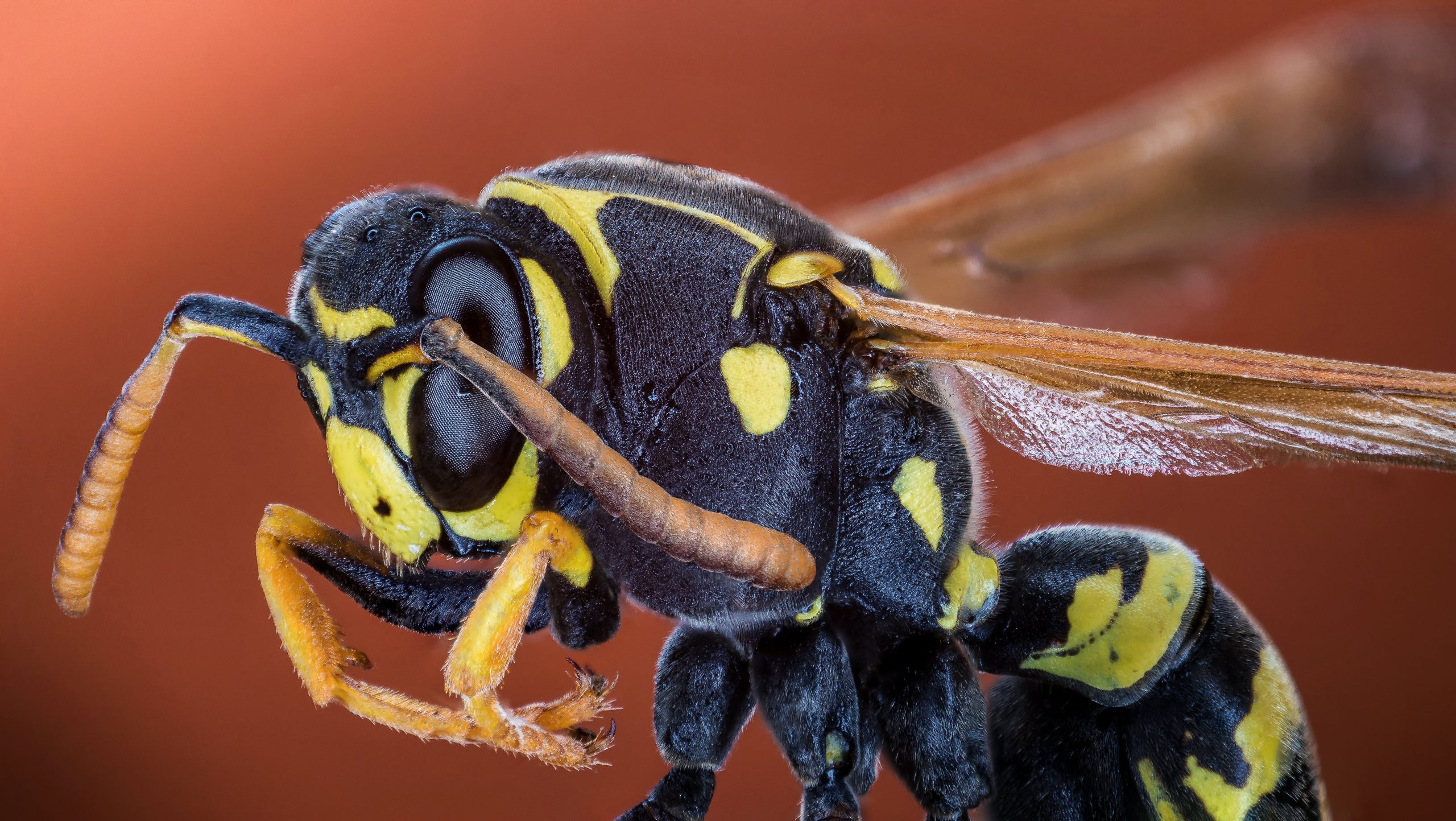Wasp stings tend to be a common problem, especially in the summer months. While they may not be as famous as their bee cousins, wasps can still pack quite a punch with their stings.
In most cases, wasp stings shouldn’t cause any alarm. These pests are indeed dangerous, but they are fairly common. However, some people can have serious and life-threatening reactions to wasp venom.
Unlike bees, wasps do not die after they sting as their stinger is not attached to their digestive tract. This means they can sting multiple times and are more aggressive when provoked.
So what happens when a wasp decides to use you as their personal pin cushion?
In this article, we’re going to discuss the symptoms and dangers that come with a wasp sting, as well as treatments and cures.
Wasp Sting: Symptoms

– Immediate pain at the site of the sting
– Swelling and redness
– Itching
– Possible nausea, vomiting, and dizziness (in cases of severe allergic reaction)
– Burning sensation in the area
What is a severe reaction to wasp sting?
A severe reaction, known as anaphylaxis, is rare but can be life-threatening. Symptoms include difficulty breathing, swelling of the throat or tongue, and a drop in blood pressure.
Here are more severe reactions to wasp stings that doctors call large local reaction:
– Swelling of an entire limb lasting a day or more
– Rash, fever and nausea
– Swelling and pain in the joints
What to do if you get stung
The Center of Disease Control and Prevention or CDC gave out these tips for those who experienced wasp or bee stings:
- Have another person stay with the patient to make sure that they don’t have an allergic reaction.
- Wash the site with clean water and soap
- Remove the stinger if it is still in your skin (scrape it out with your fingernail or a credit card and avoid using a tweezer)
- Apply a cold compress to reduce swelling
- Take an antihistamine to help with itching
- Seek medical attention if you experience severe symptoms such as difficulty breathing, excessive swelling, or dizziness.
What to avoid doing:
- Don’t squeeze out the stinger or use tweezers as this can lead to more venom being injected into the body.
- Never scratch the sting as this could lead to an infection or aggravate the area even more.
- Don’t apply lotion.
- Never burst the blisters that develop afterward as this can lead to an infection.
Home Remedy for Wasp Sting
Vinegar and baking soda are often recommended as home remedies for wasp stings, but there is no scientific proof that they work. It’s best to stick with the steps listed above and seek medical attention if necessary.
Wasp Sting: Treatment
Most of the time, wasp and bee stings can be treated without medical attention. However, they can be uncomfortable. Here are some products that can help you manage the discomfort:
- Aspirin
- Creams containing anesthetic
- Oral or topical antihistamine
Wasp Sting: Prevention
– Avoid wearing strong scents or brightly colored clothing
– Keep sugary drinks and food covered
– Be cautious around nests or known wasp hotspots
– If approached by a wasp, try to remain calm and slowly move away
– Keep your clothes clean and sweat-free as the smell of sweat can anger wasps and bees
– Always wear shoes
– User repellent products
– Always be aware of your surroundings. Take care during outdoor activities such as gardening as this could lead to accidentally disturbing a nest.
– Cover food as well as trash cans
Wasp vs Bee Sting
Both wasps and bees can sting, but there are some key differences. Wasps can sting multiple times and their stinger does not detach from their bodies, whereas bees can only sting once as their stinger gets stuck in the skin of their victim.
Bee stings also contain a venom that is different from wasp venom, so people may have different reactions and levels of sensitivity to each type of sting.
Wasp Sting in Kids
Children are more likely to experience severe reactions to wasp stings, so it’s important to monitor them closely and seek medical attention if necessary.
Teach your children how to protect themselves from wasp stings by showing them what their nest looks like and how to detect them.
Where Do Wasps Live?
Wasps build nests in a variety of places, including trees, bushes, and even cracks in walls or eaves of buildings. They are most active during the warmer months and become less active or die off in colder weather.
Remember, while wasp stings may be painful, they are not usually life-threatening unless the individual has a severe allergic reaction. Take proper precautions to prevent getting stung and know how to treat it properly if it does happen.




